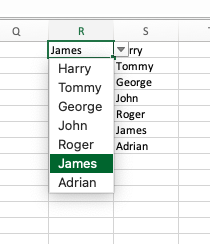Upgrade Vue to TypeScript

It’s important to keep your code up to date so that time can be dedicated to improving an application instead of version-related mishaps. This is especially true for web development as the landscape changes so quickly.
I recently upgraded a Vue project to exclusively use Vuex. This was a great opportunity to also upgrade the project from JavaScript to TypeScript. This article will cover the steps I took.
Some of the changes can be difficult to understand if you are not familiar with TypeScript. I recommend reading the TypeScript Handbook to become more familiar.
Several features of Vue, originally written in JavaScript without types, are hard to convert to TypeScript. These include this.$parent, this.$refs, and this.$emit. These allow you to access the parent component, child components, and emit events respectively. We will make changes to these features along with adding types to the global state handler provided by Vuex.Store.
Installation
Before you begin, make sure the necessary dependencies are installed:
~$ vue add typescriptAlso make sure that Vuex is installed:
~$ yarn add vuex@nextConvert your component files
There are several changes that must be made to …
vue typescript
Synchronous work in asynchronous work environments

Co-authored by Trevor Slocum.
As a team that spans the globe, asynchronous communication is a necessity for us. While we do use email, of course, we use internal text chat rooms for communication more frequently. These asynchronous tools are useful to have around, but they may not be the best fit for sharing an idea or some other information with others. Sometimes we need to speak with someone in a voice or video conference, or even share our screen and work together to solve a problem. In this article we will share some of the things we have learned while working in these situations.
Solving problems together
When pair programming, we solve problems together. This usually takes the form of one person sharing their screen while the other watches and provides guidance and feedback, but it also takes other forms which we will refer to later. Having someone critique our work in real time as we try to solve complex problems can be stressful. This is an entirely natural reaction to the situation, and happens to everyone who engages in pair programming and other collaborative work.
If you find yourself feeling this way, our advice is to take a brief pause and talk it out with your …
remote-work tips vscode
How to use dependent dropdowns in Microsoft Excel

Dropdowns are a way to constrain the input of a cell to a set of values. This can be useful for data validation, or for making a spreadsheet more user-friendly. In this article, we will look at how to create two types of dropdowns in Microsoft Excel: the basic dropdown and the dependent dropdown.
Using this, we can expand to more complex dropdown dependencies and spreadsheet generation, including validation using the Axlsx gem in Ruby.
The basic dropdown
A dropdown takes its data from a list of values specified by a range. This could be a range of cells, or a named range. To create a dropdown, first select the cell you want to add the dropdown to. Then, go to the Data tab, and click on Data Validation.

Data Validation Menu
Specify the range, e.g. =Sheet1!$A$1:$A$5. Then, select the “List” option under “Allow”. You can also specify an input message and error message, which will be displayed when the user selects the cell. Note that the range can come from another worksheet.

Basic Range
And that’s it! You can now constrain the input of the cell to the values in the range.
The dependent dropdown
Things get a little more complicated when we want to …
tips ruby
Text manipulation using regex replace in VS Code

Regular expressions are incredibly powerful tools that can make life easier for any developer. Being able to quickly and precisely parse text with the syntax you specify has kept regexes relevant from the ’80s through to today.
Visual Studio Code is an excellent modern editor and development environment. According to the Stack Overflow Developer Survey of 2022, it was far and away the most popular IDE for both professional developers and those learning to code—more than twice as popular as the second-place choice.
Like any great editor, VS Code supports using regexes to find and replace text. In this article, we’ll go over how to use this powerful regex mode.
To demonstrate, we’ll extract code values from a JavaScript object so that we can query a SQL database for content that contains one of the code values. We can use standard SQL query WHERE clause multiple matching:
WHERE code IN ('code1', 'code2', 'code3')Or we can add the values to a regex alternation group separated by pipes (vertical bars) that we can use as a string match:
WHERE code ~ '^(?:code1|code2|code3)$'Each has different query plans and performance impacts in SQL, but for …
regex vscode
Achieving Healthcare Data Interoperability

(Co-authored by Jon Jensen.)
Background
For many years, healthcare providers, public health experts, and software developers have been hard at work on standards and methods for interconnecting systems to share vast and ever-expanding patient and lab data.
In the late 1980s the non-profit organization Health Level Seven International released the HL7 data standard. That was updated many times up to the year 2007 with HL7 v2.5.1 which is still widely used today.
New healthcare data standards have emerged, including HL7 v3, the Consolidated Clinical Document Architecture (C-CDA), the Fast Healthcare Interoperability Resource (FHIR, pronounced “fire”), and more. These are not yet as broadly adopted as HL7 v2.5.1.
Under the Health Insurance Portability and Accountability Act of 1996 (HIPAA), most of this data is classified as PII (personally identifiable information) and/or PHI (personal health information) and must be kept secure and protected at all times, so that it will not be accessed without proper authorization or patient consent.
The data dilemma
Healthcare data systems now routinely communicate in many ways, but there are sometimes incompatibilities when patient …
casepointer epitrax emsa
SSH and Old Servers

We recently updated one of our backup servers from Oracle Linux 8 to Oracle Linux 9, a free rebuild of Red Hat Enterprise Linux 9, also known as RHEL 9. As with any newer OS, there are bound to be unexpected little differences which crop up and which need to be handled.
In the case of our backup server, we found that it could no longer SSH to older servers, which includes a couple running CentOS 5 (yes, there really are a few of those out in the wild), some CentOS 6, and one Debian 8. We saw similar connection problems when we first went from CentOS 7 to Oracle Linux 8, and we addressed the issues by creating a Host entry for the servers in our ~/.ssh/config file.
Here is an example of of the entry that we used previously:
Host old-server-1 old-server-2 old-server-3
User root
Hostname %h.example.com
KexAlgorithms +diffie-hellman-group-exchange-sha1This worked fine for a couple of years until we upgraded from Oracle Linux 8 to 9. At this point we started to see a different problem when trying to connect.
Unable to negotiate with <nnn.nnn.nnn.nnn> port 22: no matching host key type found. Their
offer: ssh-rsa,ssh-dssTroubleshooting
One of the good troubleshooting …
linux ssh sysadmin
CSTE Conference 2023 Retrospective

End Point is proud to have been an exhibitor at the 2023 Council of State and Territorial Epidemiologists (CSTE) conference in Salt Lake City, Utah.
We are grateful to have had the opportunity to showcase our public health software suite offering, CasePointer, to numerous state, tribal, territorial, and international epidemiologists.
The conference served as a meeting place to hear about the latest research in the fields of informatics and disease surveillance, and discuss the future of data management on state and national levels, with many talks exploring the technologies that will become future standards and practices.
The End Point booth was abuzz with visitors getting hands-on demos using the EpiTrax software as well as learning about the other aspects of the CasePointer suite, such as the Electronic Message Staging Area (EMSA), our new disease reporting portal, and the EpiTrax NMI module.

The CasePointer demo highlighted its capability of streamlining the management of epidemiological data with a user-friendly and highly customizable interface.
The CSTE conference provides a valuable opportunity to engage with epidemiologists and gain insights into the daily obstacles they …
casepointer epitrax conference
Unix tools & tips

The command line interface (CLI) programs/tools found on UNIX-like (*NIX) systems are among the most useful tools available to system administrators. CLI tools allow a system administrator to handle the *NIX systems either remotely or locally without needing to install Graphical User Interface (GUI) packages.
Almost twenty years ago, I bought two O’Reilly books: “sed & awk, second edition,” written by Dale Dougherty & Arnold Robbins, and “Mastering Regular Expressions,” written by Jeffrey E.F. Friedl. These two books were printed in the late ’90s, and I bought them in 2004. I remembered them recently when my co-workers and I held a few study sessions to learn regular expressions. When a page and chapter are mentioned in this post, I’m referring to the editions of these books printed in that particular year.
In this blog post, I’ll detail some common use cases I encounter day to day, as well as some related tools that help me handle them.
sed
During my regular work as a system administrator, I usually use sed (“stream editor”) to do string replacement across files and awk for log files or file analysis with arbitrary strings …
linux tools






